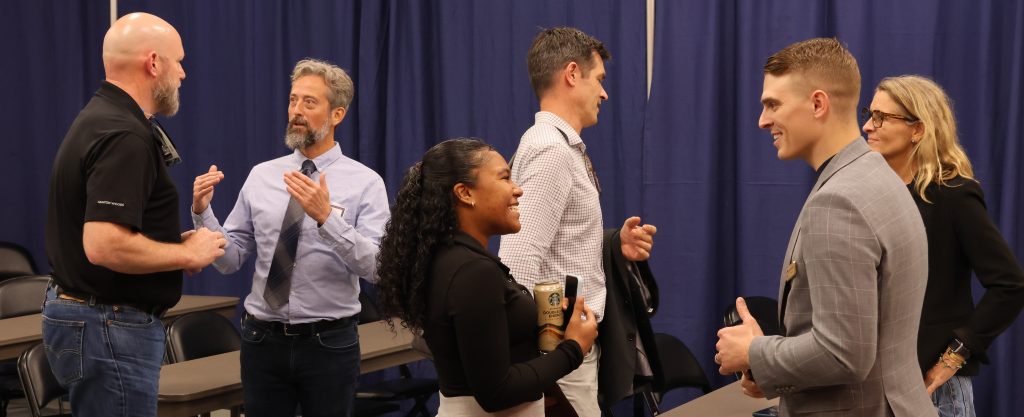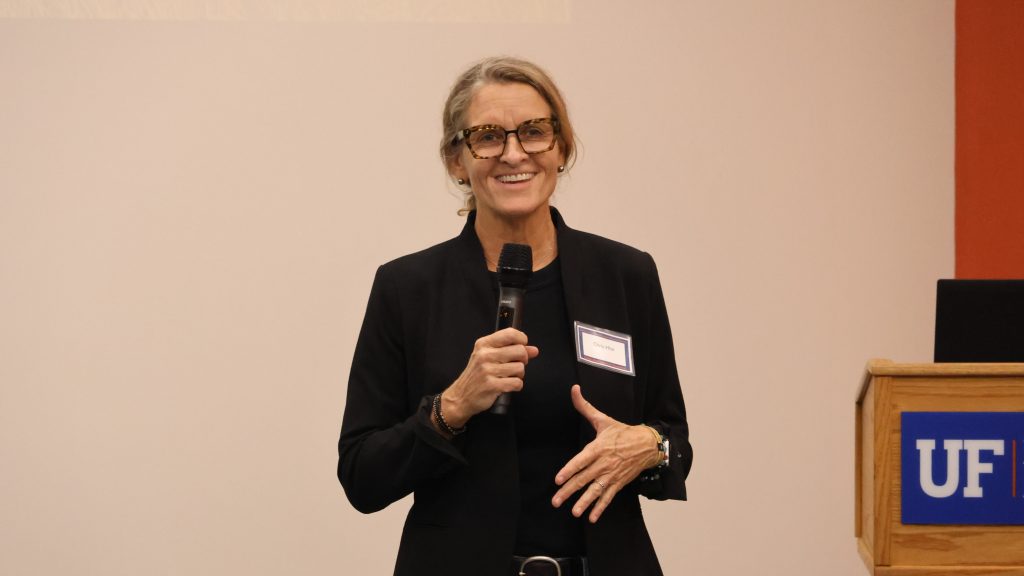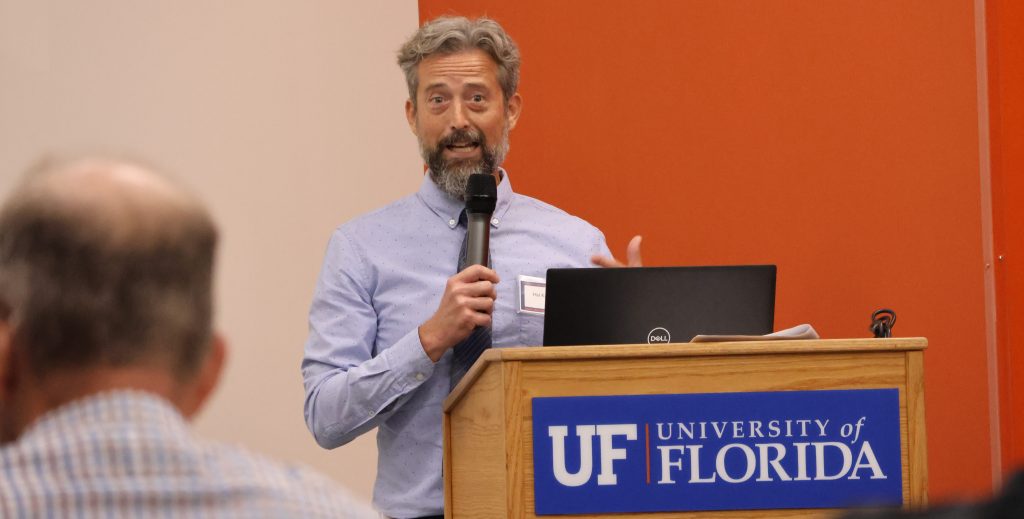
Monday, September 16, 2024
By: Kyle Niblett
How are communities designed in a way that not only minimizes the loss of Florida’s natural ecosystems, but actually supports them?
This question and more were answered at the annual University of Florida Residential Summit, hosted by the College of Design, Construction and Planning (DCP). The event took place this past Tuesday inside the Florida Room of the Stephen C. O’Connell Center.
Nathan Blinn (MSCM ’15, Ph.D. ’18), the vice president of construction and strategic innovation at Eagle Construction of Virginia, founded the event in 2021 and was inspired by the perspective of not only the builders in the room, but the students attending as well.
“I think this year’s Summit really focused on some topics that are going to be crucially important for our industry,” Blinn said. “When it comes to how we think about the landscape that we build, how we use the resources, and how we look at innovation in home building, it is going to take all of us to solve these problems and to look at what the future of building looks like.”

Christina Hite (MLAR ’12) of Dix.Hite + Partners served as the opening speaker for the event. The distinguished landscape architect focused on low water use, ecosystem benefits, healthy soils, and holistic pest management. By sharing information across disciplines and improving design approaches, communication, growing practices, installation and maintenance, Hite emphasized that collectively, those in the room could work toward a sustainable 2070 and beyond.
“I think my message on shifting the landscape paradigm was well received, especially when it came to focusing on master-planned communities, neighborhoods and single-family homes,” Hite said. “I think the presentation created a lot of fantastic discussion amongst the folks that came.”
Another person creating such dialog was closing speaker Hal Knowles (BSBC ’97), a professor in DCP’s sustainability and the built environment program. He introduced several ideas from his own lived experience in his own residential retrofits, as well as the journey of research and product understanding that he came to see as he contemplated building a new custom home.
“My key message was trying to get those in the room to recognize that the patterns and practices of the last century that got homebuilders to where they are today are not likely to be successful and lead to good outcomes in the future if they continue on that same path,” Knowles explained.

Whether it was challenges such as climate change, air and water pollution or habitat alteration, residential builders in the room came out of the event noticing a holistic change in how they speak in terms of landscape and sustainability.
“It has been interesting to see the real structural changes in how we’re doing landscaping, especially in residential construction here in Florida,” said Rob Willets (BSBC ’90), vice president of purchasing for Ashton Woods Orlando. “There is a lot of focus on limiting water use, focusing on Florida-friendly plants that are used to growing in this climate, and then doing so in such a way that is still appealing to the eye and allows customers that are living in our homes to have a landscaping package that’s going to be easy to take care of for the life of their home.”
With ecosystems and biodiversity declining more rapidly than ever, third-year interior design student Jyslen Archer came away knowing humans cannot reach sustainability goals without sustaining biodiversity.
“My biggest takeaway from the Residential Summit this year was all disciplines need to work together toward sustainable housing, water control and sustainability in general.”
Blinn noted that with folks living in Florida wanting to have that quintessential St. Augustine lawn and tropical palms, those are going to be more challenging to have with the Sunshine State’s rapid population growth. He finished agreeing with Archer on the importance of collaboration.
“Today featured tremendous feedback from innovators and people on the leading edge of what we can do in order to build more effectively.”